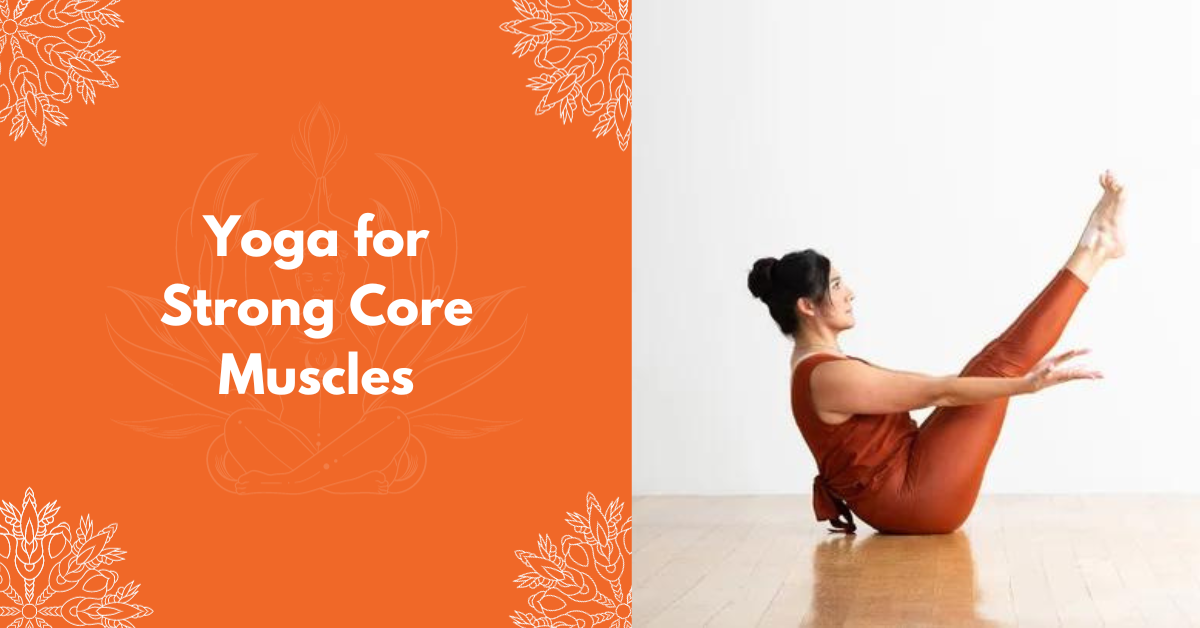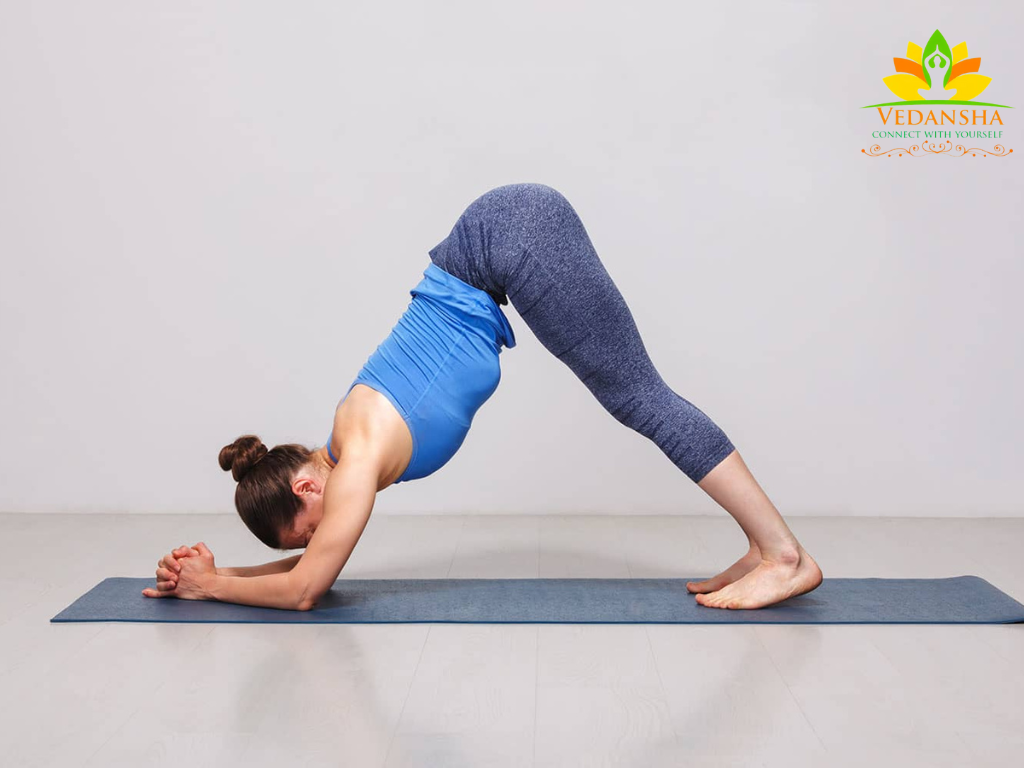
Yoga for Core Muscles: Best 12 Poses
A robust core not only supports good posture but also plays a vital role in overall fitness. Yoga, an ancient practice that focuses on the mind-body connection, offers a holistic approach to strengthening your core muscles. In this article, we will delve into the world of yoga and explore how it can help you develop a strong and resilient core.
Understanding Core Muscles
Before we dive into the benefits of Yoga for Core Muscles, it’s crucial to understand which muscles make up the core. The core isn’t just about the abdominal muscles; it includes a complex group of muscles such as the rectus abdominis, obliques, transverse abdominis, and even the muscles of the lower back and pelvic floor. A strong core stabilizes your spine and supports your entire body during various movements.
The Role of Yoga for Core Muscles
1. Plank Pose

- Start in a push-up position with your palms directly under your shoulders.
- Engage your core to keep your body straight from head to heels.
- As much time as you can spend in this position as you try to gradually extend it.
- Put your feet level on the ground and bend your knees.
- Plank pose targets the rectus abdominis and transverse abdominis, helping to build core endurance and stability.
2. Boat Pose (Navasana)

- Kneel down on the floor with your feet flat.
- Lean back a little, keeping your back straight, and lift your feet off the floor.
- Extend your legs at a 45-degree angle, creating a V shape with your body.
- Keep your arms parallel to the ground or reach them forward.
- Boat pose challenges your abdominal muscles and improves balance.
3. Downward Dog (Adho Mukha Svanasana)

- Kneel down and place your hands under your shoulders, followed by your knees under your hips.
- Lift your hips up, straightening your legs and forming an inverted V shape with your body.
- Press your palms into the ground and engage your core to maintain the position.
- Downward Dog primarily stretches the hamstrings but also engages the core for stability.
4. Side Plank Pose (Vasisthasana)

- Begin in a plank position.
- Shift your weight to one side, lifting the opposite arm toward the ceiling.
- Stack your feet on top of each other or stagger them for balance.
- This pose targets the obliques and helps improve core strength and stability.
5. Bridge Pose (Setu Bandhasana)

- Lay on your back with your legs bent and flat on the ground, hip-width apart.
- To lift your hips off the ground, apply pressure via your feet.
- Roll your shoulders under and clasp your hands beneath your torso.
- Bridge pose engages the lower back and glutes while also activating the core.
6. Superman Pose (Viparita Shalabhasana)

- Lay on your back on the mat with your arms out in front of you.
- At the same time, raise your chest, arms, and legs off the ground.
- Hold this pose for a few breaths, engaging your entire back and core.
- The superman pose helps strengthen the lower back and core muscles.
7. Dolphin Pose (Ardha Pincha Mayurasana)

Description:
- Start on your hands and knees with your forearms on the ground, elbows under your shoulders.
- Tuck your toes and lift your hips, forming an inverted V shape.
- Engage your core to maintain the position.
- Hold for 30 seconds to a minute.
Benefits: Dolphin pose strengthens the core, especially the transverse abdominis, while also improving shoulder stability.
8. Extended Triangle Pose (Utthita Trikonasana)

Description:
- Begin with your feet about 3-4 feet apart, one foot turned out and the other slightly in.
- Extend your arms to the sides at shoulder height.
- Reach forward with your front hand and lower it to your shin, a block, or the floor.
- Lift your other arm toward the ceiling, creating a straight line from fingertips to fingertips.
- Engage your core and hold for 30 seconds on each side.
Benefits: Extended Triangle Pose engages the core muscles, especially the obliques, while also providing a full-body stretch.
9. Forearm Plank Pose

Description:
- Start in a plank position, but instead of your palms, lower onto your forearms.
- Keep your elbows under your shoulders and engage your core.
- Hold the forearm plank for 30 seconds to a minute.
Benefits: Forearm plank is an excellent variation to further engage the core muscles, including the transverse abdominis.
10. Cat-Cow Pose (Marjaryasana-Bitilasana)

Description:
- Begin on your hands and knees in a tabletop position.
- Inhale as you arch your back, lifting your head and tailbone (Cow Pose).
- Exhale as you round your back, tucking your chin to your chest (Cat Pose).
- Repeat this flowing movement, syncing your breath with the motion.
- Continue for 1-2 minutes.
Benefits: Cat-Cow Pose gently engages and stretches the core muscles while also promoting flexibility in the spine.
11. Warrior III (Virabhadrasana III)

Description:
- Stand with your feet together.
- Shift your weight onto one leg while extending the other leg straight back.
- Simultaneously, lower your upper body until it’s parallel to the ground, and reach your arms forward.
- Engage your core to maintain balance and hold for 30 seconds on each side.
Benefits: Warrior III challenges the core muscles for balance and strength while also improving posture.
12. Fire Hydrant Pose

Description:
- Begin on your hands and knees in a tabletop position.
- Lift one leg out to the side, keeping your knee bent at a 90-degree angle (resembling a dog at a fire hydrant).
- Engage your core and hold the position for 30 seconds on each side.
Benefits: Fire Hydrant Pose targets the obliques and hip muscles, providing core stability and hip flexibility.
Remember to practice with proper alignment, focus on your breath, and gradually increase the intensity as your core strength improves.
Breathing Techniques
Apart from yoga poses, the art of controlled breathing, or pranayama, is an integral part of yoga. Proper breathing techniques oxygenate your muscles, including the core, promoting better muscle function and endurance.
Mind-Body Connection
Yoga isn’t just about physical postures; it emphasizes the mind-body connection. When you practice yoga, you become more aware of your body, including your core. This heightened awareness can help you engage and activate your core muscles more effectively during workouts.
Benefits of Yoga for Core Strength
Improved Posture
One of the immediate benefits of a strong core is improved posture. Yoga encourages you to align your spine correctly, reducing the risk of back pain and postural issues.
Enhanced Flexibility
Yoga promotes flexibility, which is crucial for maintaining a healthy range of motion in the core muscles. A flexible core is less prone to injuries.
Better Balance
The balance required in many yoga poses challenges your core muscles and improves your overall stability. This newfound balance can be beneficial in various aspects of life.
Reduced Risk of Injury
A strong core acts as a protective shield for your spine and lower back. With yoga, you can reduce the risk of injuries caused by sudden movements or strain on the core muscles.
Incorporating Yoga into Your Routine
How to Get Started
If you’re new to the world of yoga and eager to embark on this transformative journey, here’s how to take your first steps:
- Beginner’s Class: Consider enrolling in a beginner’s yoga class. These classes are designed specifically for newcomers and provide a structured and supportive environment to learn the fundamentals of yoga.
- Online Tutorials: Alternatively, you can explore a wealth of online yoga tutorials. Many experienced yoga instructors offer step-by-step guidance through video lessons, allowing you to practice in the comfort of your home.
- Start Slowly: Regardless of your chosen path, it’s crucial to start slowly. Yoga is about gradual progression. Begin with basic poses and breathing exercises to build a solid foundation. Rushing into advanced postures can lead to frustration and injury.
- Listen to Your Body: Pay attentive attention to the cues from your body. If a particular pose feels uncomfortable or strains your muscles excessively, modify it or skip it altogether. Yoga should be a harmonious experience, not a painful one.
Consistency Matters
The essence of reaping the full benefits of yoga for core strength lies in consistency. Here’s why it matters:
- Regular Practice: Aim to practice yoga at least a few times each week. Consistency is your ally in developing core strength, flexibility, and balance. It enables your body to adjust and become more resilient with time.
- Incremental Progress: Yoga is a journey of incremental progress. As you consistently engage in your practice, you’ll notice gradual improvements in your core strength and overall well-being.
- Mental Discipline: Consistency in yoga isn’t just physical; it’s mental too. It cultivates discipline, focus, and a deep connection with your practice. Over time, this mental fortitude extends beyond your yoga mat and positively influences other aspects of your life.
- Holistic Benefits: Consistent yoga practice maximizes the holistic benefits of this ancient discipline. It fosters not only physical strength but also mental clarity, stress reduction, and emotional balance.
Incorporating yoga into your routine is a commitment to self-improvement and well-being. By starting slowly, listening to your body, and maintaining consistency, you’ll unlock the profound rewards that yoga offers, enhancing your core strength and enriching your life in countless ways.
Conclusion
Incorporating yoga into your fitness routine can be a game-changer when it comes to strengthening your core muscles. Not only does it offer physical benefits, but it also enhances your mental well-being through the mind-body connection. So, roll out your yoga mat and start working towards a stronger, healthier core today!
FAQs
Q1: Can anyone practice yoga for core strength?
Absolutely! Yoga can be modified to suit all fitness levels, from beginners to advanced practitioners.
Q2: How long does it take to see results in core strength with yoga?
The time varies from person to person, but with consistent practice, you can expect to see improvements within a few weeks to a couple of months.
Q3: Are there any specific yoga styles best suited for core strength?
Yoga styles like Vinyasa and Power Yoga often incorporate core-strengthening poses, making them great choices for targeting the core muscles.
Q4: Can yoga help with back pain related to weak core muscles?
Yes, yoga can alleviate back pain by strengthening the core muscles, which provide better support to the spine.
Q5: Is it necessary to practice yoga in a studio, or can I do it at home?
You can practice yoga either in a studio or at home, depending on your preference. Many online resources offer guided yoga sessions for home practice.

